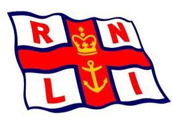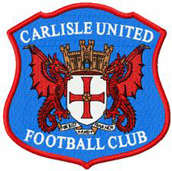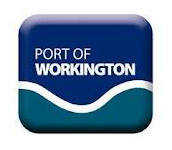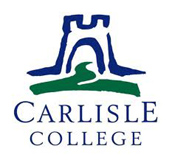- Home
- Scarrows
- Mariners
- Cumberland
- Miscellaneous
Kingston, Jamaica
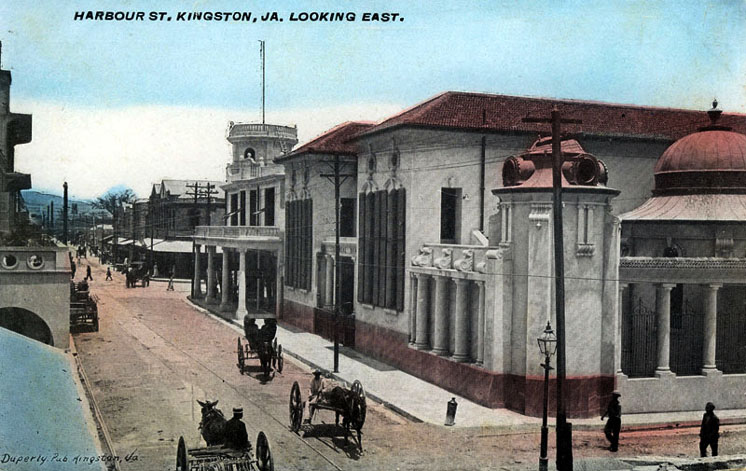
History
Jamaica is the third-largest island of the Greater Antilles, in the Caribbean. The original inhabitants of Jamaica are the Arawaks, believed to have arrived from South America some 2,500 years ago. Although there is no official figure, it has been suggested that there were up to 100,000 Arawaks, when the Spanish, headed by Christopher Columbus, arrived in 1494.
 Spain sent Juan de Esquivel to establish a settlement in 1509, which marked the beginning of Spain's colonization of Jamaica. The Spanish established 'Sevilla la Nueva' on the northern part of the island, as their centre but transferred in 1523 for 'Saint Jago de la Vega' (now Spanish Town) in the south. This settlement became the capital of Jamaica. By the 1640s many people were attracted to Jamaica, which had a reputation for stunning beauty, not only when referring to the island but also to the natives. In fact, pirates were known to desert their raiding parties and stay on the island. For 100 years between 1555 and 1655 Spanish Jamaica was subject to many pirate attacks, the final attack left the island in the hands of the English. The English were also subject to pirate raids after they began their occupation of the island.
Spain sent Juan de Esquivel to establish a settlement in 1509, which marked the beginning of Spain's colonization of Jamaica. The Spanish established 'Sevilla la Nueva' on the northern part of the island, as their centre but transferred in 1523 for 'Saint Jago de la Vega' (now Spanish Town) in the south. This settlement became the capital of Jamaica. By the 1640s many people were attracted to Jamaica, which had a reputation for stunning beauty, not only when referring to the island but also to the natives. In fact, pirates were known to desert their raiding parties and stay on the island. For 100 years between 1555 and 1655 Spanish Jamaica was subject to many pirate attacks, the final attack left the island in the hands of the English. The English were also subject to pirate raids after they began their occupation of the island.
In May 1655, British forces in the form of a joint expedition by Admiral Sir William Penn (father of the founder of Pennsylvania), and General Robert Venables seized the island. In 1657 the Governor invited buccaneers to base themselves at Port Royal to deter Spanish aggression. In 1657 and 1658 the Spanish, sailing from Cuba, failed at the battles of Ocho Rios and Rio Nuevo in their attempts to retake the island, and in 1657 Admiral Robert Blake defeated the Spanish West Indian Fleet.
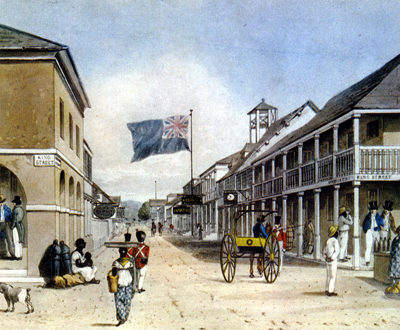 The British extended colonisation in 1661 and gained formal recognition of possession from other European powers through the Treaty of Madrid in 1670. However part of the Island remained in the hands of the Maroons with whom they signed a treaty on 1 March 1738. Although much of the Spanish capital, Villa de la Vega, was burned during the conquest, the English renamed it Spanish Town and kept it as the island's capital. For some time, however, Port Royal functioned as the capital while Spanish Town was being rebuilt.
The British extended colonisation in 1661 and gained formal recognition of possession from other European powers through the Treaty of Madrid in 1670. However part of the Island remained in the hands of the Maroons with whom they signed a treaty on 1 March 1738. Although much of the Spanish capital, Villa de la Vega, was burned during the conquest, the English renamed it Spanish Town and kept it as the island's capital. For some time, however, Port Royal functioned as the capital while Spanish Town was being rebuilt.
The island was a major base for pirates, especially at Port Royal before it was destroyed in an earthquake in 1692. After the disaster, Kingston was founded across the harbour, one of the largest natural havens in the world, and rapidly became the major commercial centre of the island.
The cultivation of sugar cane and coffee by African slave labour made Jamaica one of the most valuable possessions in the world for more than 150 years. The colony's slaves, who vastly outnumbered their white masters by a ratio of 20:1 in 1800, mounted over a dozen major slave conspiracies and uprisings throughout much of the 18th century, including Tacky's revolt in 1760. Escaped slaves known as Maroons established independent communities in the mountainous interior that the British were unable to inhabit, despite major attempts in the 1730s and 1790s; one Maroon community was expelled from the island after the Second Maroon War in the 1790s and those Maroons eventually became part of the core of the Creole community of Sierra Leone. The colonial government enlisted the Maroons in capturing escaped plantation slaves. The British also used Jamaica's free people of color, 10,000 strong by 1800, to keep the enslaved population in check. During the Christmas holiday of 1831, a large scale slave revolt known as the Baptist War broke. It was organised originally as a peaceful strike by Samuel Sharp. The rebellion was suppressed by the militia of the Jamaican plutocracy and the British garrison ten days later in early 1832.
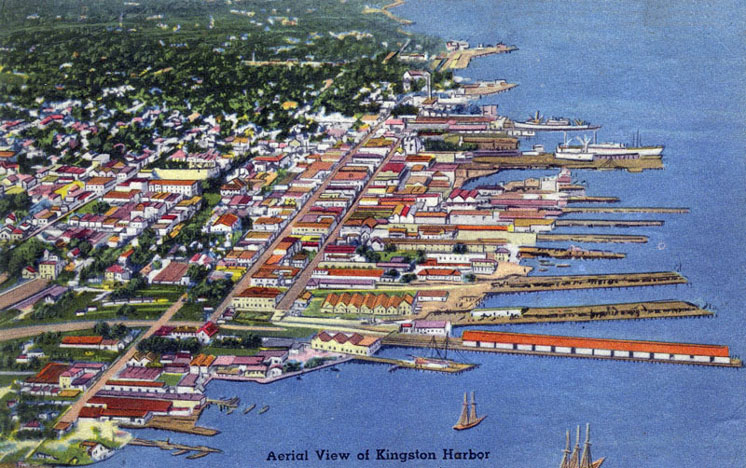
Because the loss of property and life in the 1831 rebellion, the British Parliament held two inquiries. The results of these inquiries contributed greatly to the abolition of slavery as of August 1, 1834 throughout the British Empire. However the Jamaican slaves remained bound to their former owners' service, albeit with a guarantee of rights, until 1838 under what was called the Apprenticeship System. The freed population still faced significant hardships, marked by the October 1865 Morant Bay rebellion led by George William Gordon and Paul Bogle. It was brutally repressed. The sugar crop was declining in importance in the late 19th century and the colony diversified into bananas.
In 1872 the capital was moved to Kingston, as the port city had far outstripped the inland Spanish Town in size and sophistication. In 1866 the Jamaican legislature renounced its powers, and the country became a crown colony. Some measure of self-government was restored in the 1880s, when islanders gained the right to elect nine members of a legislative council.
The establishment of Crown Colony rule resulted over the next few decades in the growth of a middle class of low-level public officials and police officers drawn from the mass of the population whose social and political advancement was blocked by the colonial authorities.
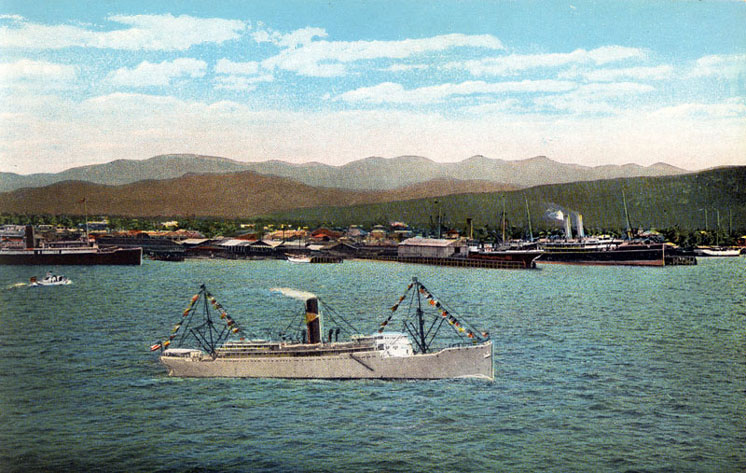
The Great Depression had a serious impact both on the emergent middle class and the working class of the 1930s. In the spring of 1938 sugar and dock workers around the island rose in revolt. Although the revolt was suppressed it led to significant changes including the emergence of an organized labour movement and a competitive party system.
Imports
| Goods | Place of Origin |
|---|---|
| Coal | U.S.A. |
| Clothing | Britain |
| Machinery | Britain |
Exports
| Goods | Destination |
|---|---|
| Sugar Cane | Britain, U.S.A. |
| Rum | Britain, U.S.A. |
| Coffee | Britain, U.S.A. |
| Cocoa | Britain, U.S.A. |
| Ginger | Britain, U.S.A. |
| Pimento | Britain, U.S.A. |
Industry
| Port Industries | Other Industries |
|---|---|
Scarrow Associations
| Scarrow | Period |
|---|---|
| Joseph Scarrow | 1841-42 |
| Robert Scarrow | 1913, 1925-27, 1929-30, 1935-35, 1938-39 |

